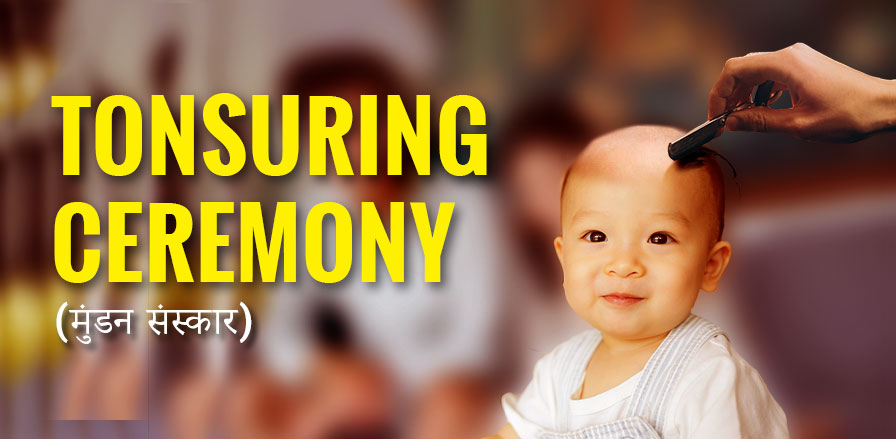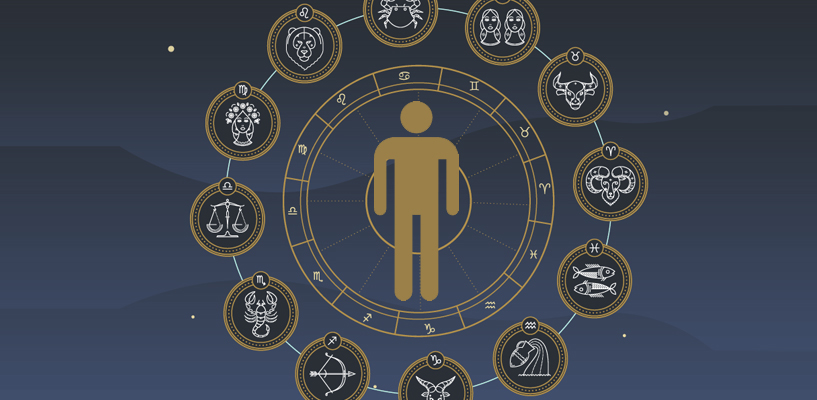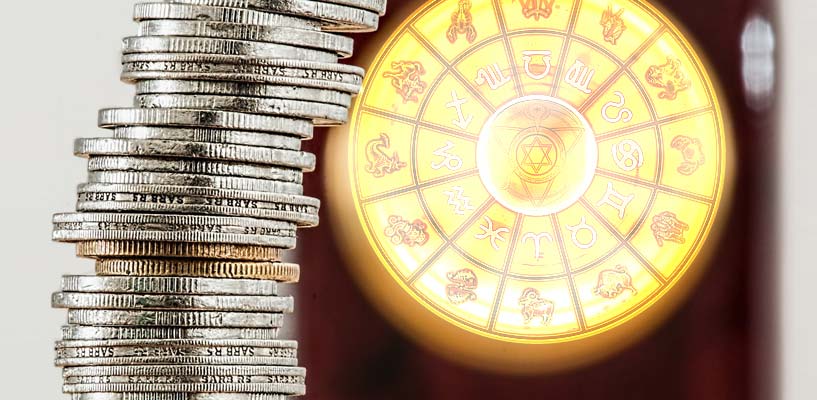Tonsuring Ceremony (Mundan Samskara)
This ritual involves shaving the child’s head or trimming the child’s hair for the first time. It is normally done in the 1st or 3rd year. It gives a chance to examine the anterior fontanelle & other parts of the scalp. Read the article to learn about the belief systems around it, method to be followed, the science behind this ritual, etc.
Mundan or the tonsuring ceremony is an important ritual amongst Hindus. It is performed during the first or third year of a child’s birth. In some regions, the ritual is performed for the male child only.
Tonsuring is the act or process of cutting the hair and it has been practiced in across different parts of the world. It is practiced in Christianity, Hinduism, Buddhism, Judaism, Islam, and even secular European countries. But the origin of the tonsure is still a mystery. In Northern Britain, people wore the tonsure prior to their contact with the Roman Empire and with no relation to religion. Members of both the Eastern Orthodox Church and the Roman Catholic Church wore the tonsure with the belief of going back to the time of Jesus Christ. There are different types of tonsures such as clerical, baptismal and monastic based on the pattern. This was in vogue till the Roman Catholic Church abolished the practice of tonsure in 1972.
Belief systems around Tonsuring
Tonsuring is one of the ‘samskaras’ (sacraments) in the Hindu religion. This ceremony is also called Chudakaran or Mundan (tonsuring of hair) and is performed in the first or third year of the child. It is a very important function in Hindu religion and is practiced in many communities. In Buddhism, it’s a necessary function which is a part of the rite of becoming a monk. This process involves shaving the head and face. Some Chinese monks also have six, nine or twelve dots on the top of the head as the shaving scalp is touched with the tip of a smoking incense stick.
It is often customary for pilgrims on Hajj to shave their heads before entering Mecca as a sign of their rejection of vanity for cleanliness. Jain monks pluck their hair so as to keep their scalp bare and to keep the scalp clean, they don’t use blade or knife for the tonsuring process.
Tonsuring is a common ritual and religious belief which has been believed and practiced in the Tirupati Temple by thousands and thousands of ardent devotees. Men and women offer their hair to Lord Balaji for favors received, to show gratitude and respect. Temple authorities sell the hair and earn millions of rupees. In 2007, Tirumala Tirupati Devasthanams sold human hair worth INR 450 million. Long hair is used to make wigs and extensions and from short hair, I-cysteine is extracted which acts as precursor in the food, pharmaceutical and personal care industries.
Myths about Tonsuring
The common myth prevalent among the public is that shaving of hair improves hair growth. Scientifically it has been proved by Lynfield and Macwilliams that the reason for this misconception could be based on the fact, that, when a person shaves their hair, the changes in length is noticed more easily. When we take the example of shaving off a beard, for instance, we see a clean-shaven man one day and then observe the follicles grow daily. However, the truth is, no significant difference in total weight of the hair produced in the measured area or in the width of individuals’ hair could be proved because of this process.
Why should we perform this ritual?
- It helps to negate the negativity of past life.
- It is to pray for the child’s long life and a good future.
- Protects from the evil eye.
- Cleanses the child’s body and soul.
- Helps to keep the child’s head cool, especially during the summer months.
- Helps relieve headache and pain caused by teething.
- It anatomically corresponds to the occipital region and activates the pineal gland.
Religious belief behind Tonsuring Ceremony
As per the Hindu belief system, a soul gets a human body after completion of 84 lakh yonis. It is believed that each yoni has its impression on the soul and influences human birth. The tonsuring ceremony is a purification ceremony of the soul to remove the influences of past imprints. It is an old belief that the first hair of the baby carries the sins of previous birth. So it should be purified for the future growth of the soul. Some also believe that by shaving off the head it helps in stimulating proper growth of the nerves and brain. It also helps in keeping the baby’s head cool during the hot summer.
Tips for safe Tonsuring Ceremony
- The child must be well fed and rested, so that they don’t become cranky during the ceremony.
- Choose a professional barber to avoid any kind of head injury.
- The equipment used must be properly sanitized and sterilized; and the environment must be hygienic.
- Give your child a nice warm bath after the ceremony, as small strands of hair stuck on the body might get into their eyes or mouth and can cause infection and irritation.
- Apply sandalwood paste on the child’s head, to heal any injury caused during the process.
Science behind Tonsuring Ceremony
- It gives a chance for the examination of the skull and stimulate hair growth.
- Gives a chance to detect abnormalities like wide sutures, microcephaly, macrocephaly, elevated or depressed fontanelle, syndrome, etc.
- Palpitation of scalp may also reveal cranial defects or craniotabes; gives a chance to also detect marked venous distension or prominence vein.
- Gives a chance to detect cutis aplasia, abnormal hair whorls or other genetic disorders.
- It’s therapeutic in curing diseases such as pediculosis, plica polonica and peidra.
- Vitamin D is absorbed faster when baby’s body is exposed to the sun.
Procedure for the Ceremony
Tonsuring or ‘mundan’ is performed on a specific date at an auspicious time as per the time of birth of the child. Usually, it is performed in the first or third year of the child, in their Janma Nakshatra. The mother / father / mama (uncle) sits with the child in their lap and the barber performs the mundane.
Sandalwood paste is applied thereafter to heal the head. In some regions, a small portion of the child’s hair is donated to the family deity as a token gift to the God to protect the child.
- The priest performs a yagna along with the mother, father and child seated near the yagna.
- Then, the barber shaves a part of the child’s head by chanting sacred mantras.
- In some religion, the belief goes that a girl’s head is to be completely shaven while a small tuft should be left at the top of the boy’s head, which is called ‘shikha’ or ‘choti’.
- The shaved head is then washed with holy water (Gangajal).
- The priest then applies sandalwood or turmeric paste on the child’s head. This paste has antiseptic properties and heals.
Indastro top 10 Products
Translate











 Which Bollywood Star do you share your Zodiac sign and traits with
Which Bollywood Star do you share your Zodiac sign and traits with
 The Relation Between Zodiac Signs and Your Body Parts
The Relation Between Zodiac Signs and Your Body Parts
 https://www.indastro.com/astrology-articles/improve-finance
https://www.indastro.com/astrology-articles/improve-finance
 How Each Zodiac Introduces Themselves
How Each Zodiac Introduces Themselves
 Politicians You Share Your Zodiac With
Politicians You Share Your Zodiac With
